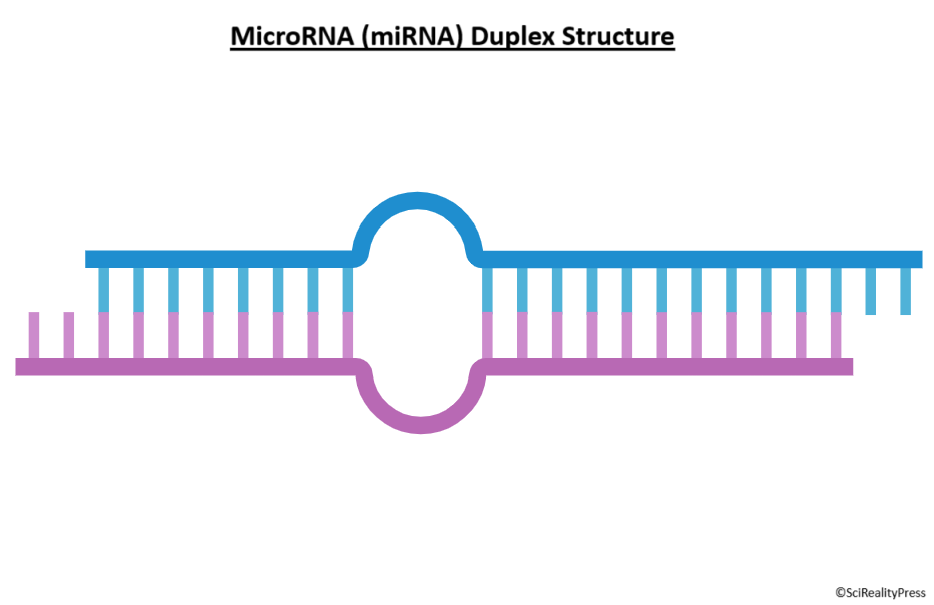What is Micro RNA or miRNA?
Micro RNAs belong to small non-coding RNA molecules involved in the regulation of gene expression. These short RNA sequences, typically of around 20-25 nucleotides, have emerged as important regulators of biological processes, ranging from cell development to the development of disease, with much importance in proving center stage in molecular biology since their discovery in the early 1990s.
Unlike mRNAs that translate their sequences to proteins, microRNAs code for no protein. Instead, from the existing microRNAs, certain sequences in the target mRNA may be bound to and can induce either its degradation or inhibit translation. This fine-tuning of gene expression makes the miRNAs important participants in cellular activities concerning growth, differentiation, and apoptosis.
Micro RNA Structure Structure
Primary Micro RNA (pri-miRNA)
Pri-miRNAs are long, capped and polyadenylated RNA transcripts, several kilobases in length. They are transcribed from miRNA genes by RNA polymerase II.
Pri-miRNAs are found to possess one or more stem-loop structures. It is crucial for further processing of the miRNA that takes place. These are caused by complementary base pairing in the RNA sequence.
Precursor Micro RNA (pre-miRNA)
Pre-miRNAs are shorter than pri-miRNAs and run in the range of approximately 70-100 nucleotides. They possess a unique hairpin structure with a stem, comprising the double-stranded RNA portion and a loop at the top of this structure which is single-stranded RNA.
Pre-miRNAs are formed in the nucleus. Cleavage of pri-miRNA by the microprocessor complex, which consists of the enzyme Drosha and the cofactor DGCR8 (DiGeorge syndrome critical region 8).
The nucleocytic-tudal or pre-miRNA hairpin is exported out of the nucleus into the cytoplasm by a protein called Exportin-5.
Mature miRNA
Size: Mature miRNAs are 20-25 nucleotides long. Structure: Mature miRNAs are single-stranded RNA molecules. In the cytoplasm, Dicer cuts the pre-miRNA into a mature miRNA duplex approximately 22 nucleotides in length. There are two strands to this: the guide strand (the active miRNA) and the passenger strand, or miRNA. The guide strand, which is the functional miRNA, enters the RISC while the second strand is degraded. The mature miRNA therefore takes the form of a functionally active conformation capable of binding to target mRNA.
miRNA-RISC Complex
It is the RISC that contains the functional form of miRNA: several proteins and mature single-stranded miRNA. The most important of these proteins are the Argonaute proteins.
The guide strand of the miRNA in the RISC complex guides the complex to target mRNAs, typically into the 3′ untranslated region (3′ UTR) of the mRNA, through complementary base pairing.
miRNA Structure Identification
- Pri-miRNA: Long, capped transcript with one or more hairpins.
- Pre-miRNA: A short hairpin-loop structure, it is 70-100 nucleotides in size.
- Mature miRNA: Single-stranded RNA; length, 20-25 nucleotides; loaded onto the RISC complex.
Mechanism of miRNA
The specific function of the microRNAs is that they can silence gene expression post-transcriptionally, or after the gene has been transcribed into messenger RNA. MicroRNAs are synthesized in a multi-step process:
- Transcription: Like all RNAs, miRNAs are transcribed from DNA, typically as part of a longer precursor molecule known as primary miRNA, or pri-miRNA.
- Processing: Drosha is an enzyme that resides in the nucleus and cleaves the pri-miRNA into smaller precursor miRNAs, pre-miRNAs.
- Transport to cytoplasm: The processed pre-miRNAs are then transported to the cytoplasm.
- Final Maturation: Dicer is another enzymatic activity that cleaves the pre-miRNAs into the mature, functional miRNAs.
- Targeting mRNAs: When mature, miRNAs form a protein complex called the RNA-induced silencing complex (RISC). The miRNA-RISC complex hybridizes to complementary sequences of target mRNAs, which results in the degradation of the mRNA or inhibition of its translation into protein.
miRNA Functions
- Development: The miRNAs play a critical role in developmental processes. They possess the ability of controlling the expression of genes at certain stages. They regulate various lines of stem cells to differentiate and organize into various cell types. Moreover, it has an involvement in the formation of an organ and tissue.
- Cell proliferation and death: miRNAs induce cell to divide and survive or repress, hence crucial for maintaining the balance between cell growth and programmed cell death, therefore important in the normal tissue development and homeostasis.
- Immune response: miRNAs are responsible for controlling the immune cell development and function, meaning that they influence how the organism would respond to infections and inflammation.
- Cancer: The deregulation of expression occurs in various cancers. Some miRNAs are tumor suppressors, and others serve as oncogenes-genes that activate cancer development. An imbalance in the expression of these miRNAs leads to uncontrolled proliferation, metastasis, and resistance to chemotherapy.
miRNA Involving Diseases
Due to their regulatory functions, miRNAs are linked with various diseases. Some of the diseases are found to be associated with changes in the expression of miRNAs; those diseases include cancer, cardiovascular diseases, neurological disorders, and autoimmune diseases.
- Cancer: In most cancers, there will be miRNAs that are overexpressed and those that are underexpressed which contribute to the progression of tumor and its spread. Tumor-suppressing miRNAs may be downregulated, driving cancerous cell behavior through oncogenes; on the other hand, miRNAs that promote cancer called oncomiRs may also be upregulated to drive the process of disease further.
- Cardiovascular Diseases: miRNAs represent important regulators of cardiovascular disease. Some of the developmentally recognized miRNAs can even influence heart function: indeed, heart failure, atherosclerosis, and hypertension are among the most critical conditions linked to cardiovascular diseases.
- Neurodegenerative Diseases: miRNA profile changes have been associated with disorders like Alzheimer’s and Parkinson’s disease. Such changes can cause the improper regulation of key proteins that are related to the neurodegenerative pathways.
miRNA in Therapeutics
Because miRNAs have been implicated in several diseases, these molecules are also emerging as therapeutic targets. Via controlled alterations in the levels of these molecules, researchers are working to restore the imbalanced gene expression that characterizes a disease.
- miRNA Inhibition: Anti-miRs can be used to inhibit particular, overexpressed miRNAs in disease states and therefore abrogate their activity. For example, depletion of an oncomiR in malignant cells may induce a more normal cellular phenotype.
- miRNA replacement: artificial provision of synthetic miRNAs, often termed as miRNA mimics, restores normal levels of gene regulation and improves cell function in diseases characterized by underexpression of miRNAs.
Image Source: Created in BioRender.com
Last Modified:
Graduated from the University of Kerala with B.Sc. Botany and Biotechnology. Attained Post-Graduation in Biotechnology from the Kerala University of Fisheries and Ocean Science (KUFOS) with the third rank. Conducted various seminars and attended major Science conferences. Done 6 months of internship in ICMR – National Institute of Nutrition, Hyderabad. 5 years of tutoring experience.






